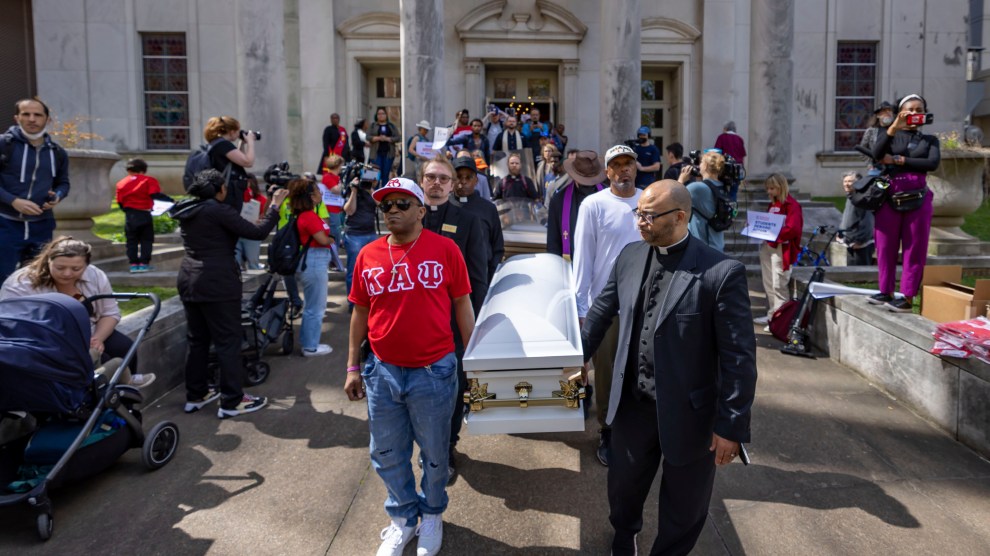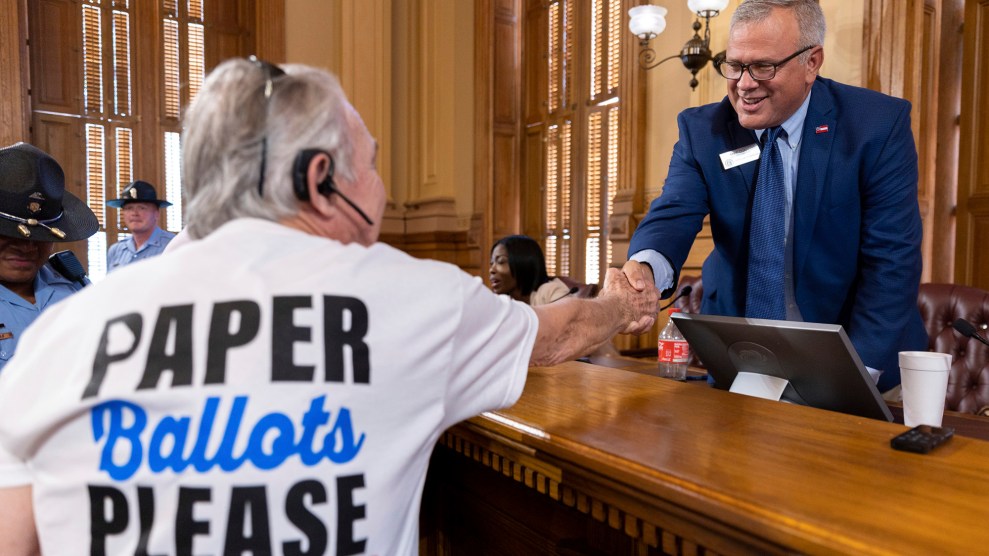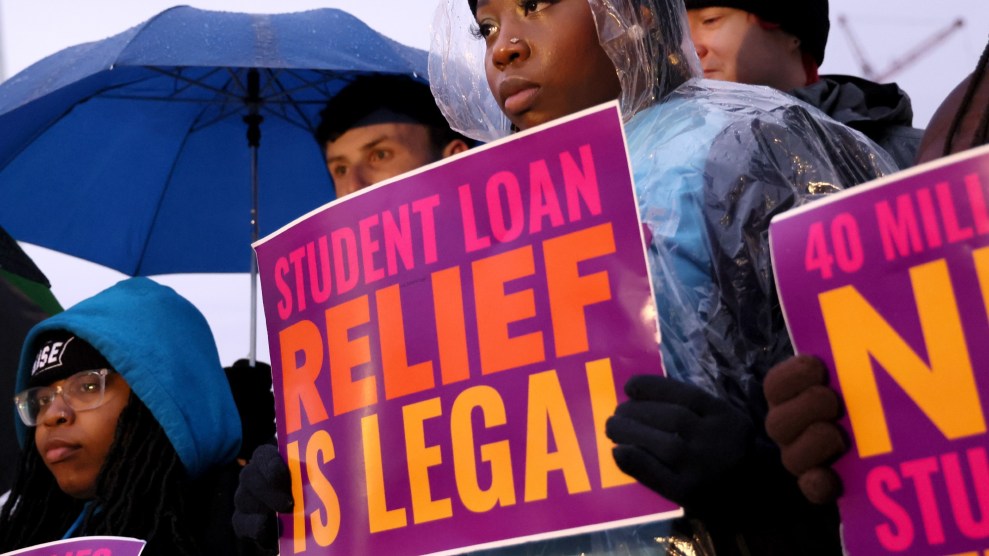
Silas Stein/dpa via ZUMA
For nearly 30 years, federal law has banned people who have domestic violence restraining orders from possessing guns. It’s a sensible policy reflecting a set of stark statistics: Women whose abusers have access to guns are 5 times more likely to be killed than those whose partners don’t have guns available. About a third of female murder victims are killed by an intimate partner, most of whom use firearms to carry out the violence.
Then, last February, a conservative federal appeals court in the South chose gun rights over domestic violence survivors’ lives, siding with an alleged abuser who argued that a gun prohibition attached to his restraining order violated the Second Amendment. Now, the Supreme Court has decided to take up the case. On Friday, as it handed down a slew of controversial decisions, the court announced it will hear United States v. Rahimi during its next term, which begins in October.
According to court papers, in December 2019, a Texas man named Zackey Rahimi assaulted his girlfriend in a parking lot, dragged her into his car, fired his gun when he noticed a bystander watching, and threatened his girlfriend’s life. She escaped the car and applied for a restraining order, which was granted after Rahimi did not show up for a hearing. Among other restrictions, the two-year restraining order suspended his handgun license, prohibiting him from possessing a firearm. Yet within a year Rahimi had broken the restraining order and threatened another woman with a gun; in a two-month span in late 2020 and early 2021 he participated in five shootings around Arlington, Texas, according to the Solicitor General’s Supreme Court petition:
First, after someone who had bought drugs from him “started talking ‘trash’” on social media, he went to the man’s home and fired bullets into it using an AR-15 rifle. The next day, after colliding with another vehicle, he alighted from his car, shot at the other driver, fled, returned to the scene, fired more shots at the other car, and fled again. Three days later, Rahimi fired a gun in the air in a residential neighborhood in the presence of young children. A few weeks after that, a truck flashed its headlights at Rahimi when he sped past it on a highway; in response, Rahimi slammed his brakes, cut across the highway, followed the truck off an exit, and fired multiple shots at another car that had been traveling behind the truck. Finally, in early January, Rahimi pulled out a gun and fired multiple shots in the air after a friend’s credit card was declined at a fast-food restaurant.
Rahimi was indicted for having the gun while his ex-girlfriend’s restraining order was in effect. After trying and failing to challenge the law, he pleaded guilty and was sentenced to around 6 years in prison.
Enter the Supreme Court. Last year, in the major gun-rights decision New York State Rifle & Pistol Association Inc. v. Bruen, the court overturned a New York state law that granted concealed-carry licenses only to those who could show a “special need” for self-protection. But the Bruen decision, authored by Justice Clarence Thomas, also made sweeping changes to the way gun control laws are evaluated under the Second Amendment: The court ruled that the only constitutional gun restrictions are those deemed “consistent with the Nation’s historical tradition of firearm regulation.”
After Bruen, the Fifth Circuit reevaluated Rahimi’s case. The federal government tried to argue that the law stripping guns from people with domestic violence restraining orders against them was “consistent with the Nation’s historical tradition” of laws disarming people considered “dangerous”—which in the past included enslaved people, Native Americans, and those “unwilling to take an oath of allegiance.” But the Fifth Circuit found those old laws weren’t similar enough, and ruled that the modern-day federal law was unconstitutional.
“That the ruling could be what it was with the fact scenario of Rahimi is terrifying to me,” Jeana Lungwitz, the director of the Domestic Violence Clinic at the University of Texas School of Law, told the Texas Tribune. “It was proof that, you know, if we don’t care about his partner, I mean, do we care about the public?”
When the Supreme Court hears the case next term, it could decide to expand the Fifth Circuit’s ruling, which currently applies only to Texas, Mississippi, and Louisiana. Or it could overturn it, restoring a federal law that has protected survivors for almost three decades.

















